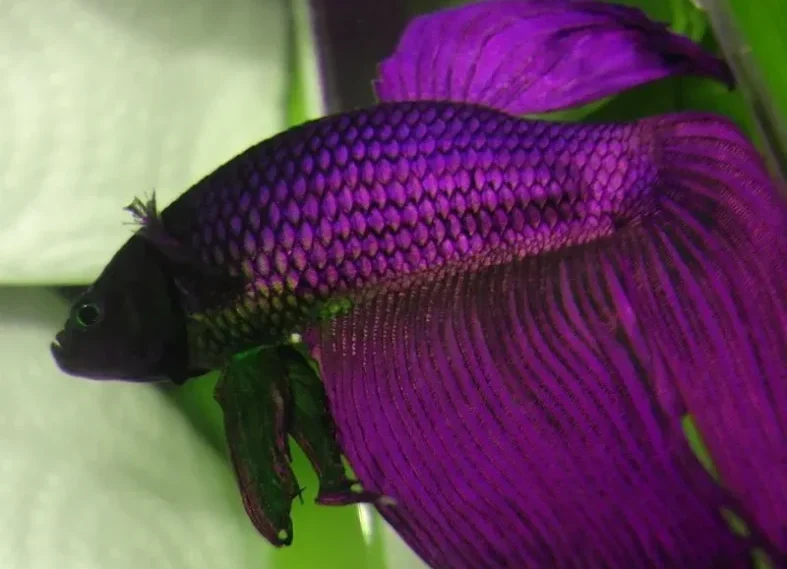The Purple Betta fish is an absolute Aquatic Marvel. We know how important it is for you, to know your beloved water jewel. However, gathering specific information about the bedazzled Purple Betta can be difficult because it is as elusive as the fish themselves.
But you can count on us to guide you through! In this article, we will discuss each significant aspect of the Purple Betta, rest assured. So come on, let’s dive into “Everything you need to know about the Purple Betta fish.
Let me ask: Have you ever seen a true Purple Betta fish? If not, then come along as we glimpse their beauty and uniqueness in today’s article.
Here are some quick facts about our little showstopper!
Quick Care Guide
| Species Name | Betta Spiendens |
| Family | Guarami |
| Required Temperature | 75 to 80 degrees Fahrenheit |
| Behave and Temperament | Aggressive |
| Total Lifespan | 5 years |
| Overall Size | 2.25” to 2.5” |
| Feed | Carnivorous |
| Minimum Tank Size | 5 to 10 gallons |
| Tank Set-Up | Warm with gentle water currents |
Now that you know most of the basics, let’s move on to the details. Join us in this exciting journey to uncover the secrets of the Crown of Southeast Asia’s freshwaters: The Purple Betta fish.
True Purple Betta
The diversity of the colors available in this beautiful swimmer can’t be appreciated enough. But there is something else that makes its beauty more desirable, this my dear reader is its scarcity and rareness.

Image Source: medium
Betta fish is not some random pet that can be bought at any pet store, rather it is a high-demand commodity. Moreover, the specific Violet Betta or Purple betta is even rarer.
But if it is that rare, then where does the Betta fish come from, and why such color? The answer to that is selective breeding. As this fish is a result of this specific breeding, deciding the color of this fish is a job no less than touching the skies. All we can do is guess the color based on the stats. But if we talk about the Purple Betta, achieving this specific color is even harder.
The purple betta has its unique and distinctive color due to a special genetic modification. Achieving this modification is near to impossible and success in breeding such a variety of betta fish is just a matter of Luck!
Another variant that is similar to the beautiful betta fish is the “blue-purple betta”. This is a similar fish but it is less rare and somewhat available in the market. A newbie might not be able to understand the difference but, under a slight change of light, the differences can be easily spotted.
Purple Betta Fish Origin
What is a Betta fish you may ask? The Betta, also known as the Siamese fighting fish is native to the freshwaters of Asia, specifically Cambodia, Laos, Myanmar, Malaysia, Indonesia, Thailand, and Vietnam. This fish has an extended history and importance for the Southeast. Especially for the people of Vietnam, the betta fish origin is deeply rooted in their culture and history.
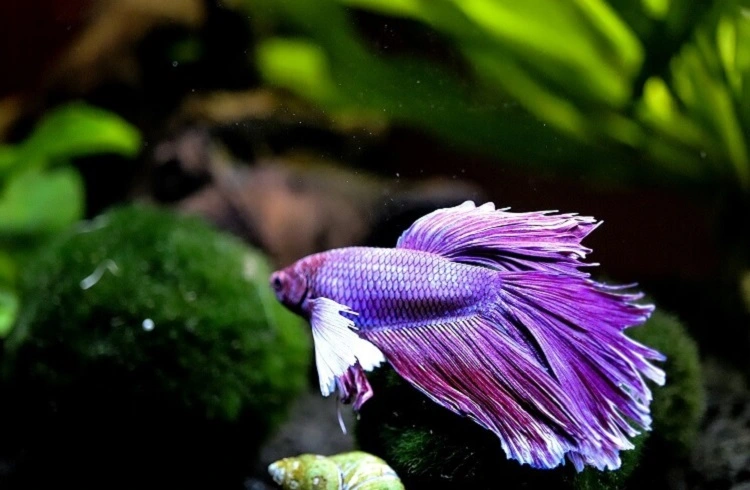
Image Source: Fishlab
It is Widely known as “Pla-Kad” in Thai. Due to its aggressive nature, this fish was initially domesticated by the people of Thailand, for the sole purpose of fighting and entertaining observers. With time, the selective breeding of this aquatic species resulted in variations of color, which ultimately led to the beautiful color spectrum that these fish wear today. Our purple showstopper is also one of these beautiful fish.
Purple Betta Fish: The Labyrinth Organ
Want to know an interesting fact? The Purple Bettas have a labyrinth organ, meaning they don’t just use their gills for respiration but they can go on the surface and take gulps of oxygen. This makes Betta a surface dweller.
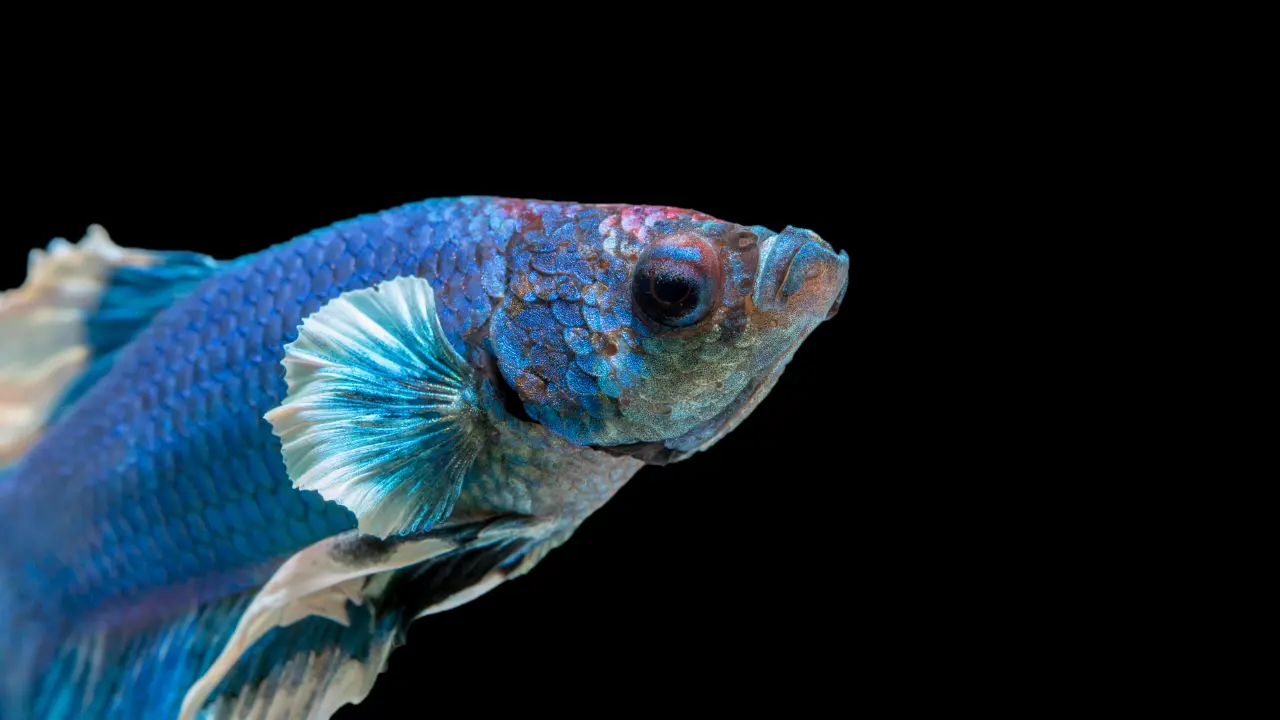
Hence having an expensive oxygen pump is not necessary, but make sure that the water is changed frequently so that the oxygen dissolving capacity of the water is maintained at a moderate level.
The air intake of the aquarium must be kept wide open, especially at the top of the aquarium must have a spacious opening so that oxygen can easily reach the surface of the water.
Purple Betta Fish Lifespan
Purple betta fish can live for around 2 to 4 years in captivity but it depends on the care that they receive. A Purple Betta Fish can even have a lifespan of 5 years if it gets appropriate care, the necessary diet, ideal tank setup with regular maintenance.
Purple Betta Tankmates
The Purple Betta Fish is as complex as it looks. Each Betta fish can have a personality of its own. The most common attributes of their behavior are discussed here
The gorgeous betta fish pretty much steals the spotlight of the aquarium, but that’s not all of it. The Males of this species are known to be very territorial and aggressive towards other fish. They flare their fins and display aggressive behavior when they perceive a threat even if it’s their tank mates.

We suggest having no tankmates with betta fish as they like a solitary life. In other cases, tank mates must thrive at completely different water levels so the chances of a fight are minimal to none. Tankmates that like nibbling your purple betta’s sensitive fins and tail might damage them, so that’s a big No!
Interestingly, this fish is not just aggressive, it’s also intellectual and curious. It might seem like this fish likes a solitary life but it can interact with fish as well as humans. In multiple cases betta fish can be observed recognizing their owners, following them around across the tank, and playing hide and seek.
Purple Betta Fish Diet
A significant part of their diet includes high-protein insects, bloodworms, shrimp, and smaller fish which makes them carnivores. They do graze on plants but only occasionally
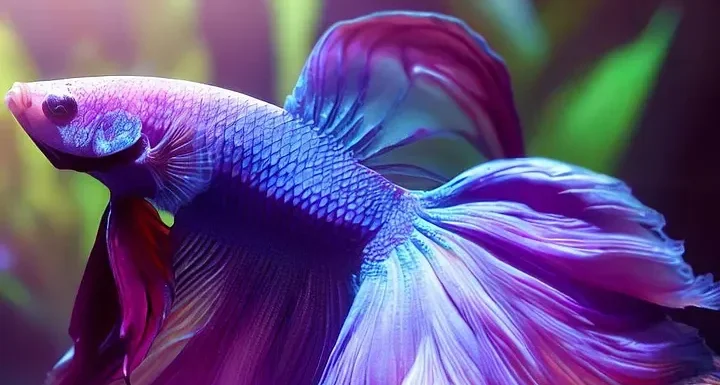
Image Source: medium
There’s a variety of betta feeds available in the market such as live, frozen, dried flakes, and pallets. We suggest trying a combo of more than one specific type or choosing what your betta likes the most. Here are some of our expert suggestions
The ideal amount of feed for a betta is 4 pellets a day, or 2 pellets twice a day. Although equivalent amounts of other diets can also be provided. Make sure their diet includes at minimum 1 protein source.
Purple bettas are known for their survival skills. They can go on for several days without food. We suggest feeding them regularly but it’s not a big deal if you miss a day or two. Check out How long can a betta fish live without food.
Purple Betta Fish Tank Setup
Purple Betta fish is a free swimmer, meaning that it loves to flaunt its beauty across the fish tank. A minimum 5-gallon tank is required for a betta fish to survive but we suggest having at least a 10-gallon aquarium.
The size of the tank must be increased with the addition of any tankmate. If you are planning to add a new tankmate that is longer than an inch, increase the tank space by 1 gallon. In all cases, the betta fish must have a spacious space to swim. Additionally, here are some Betta Fish Tank Parameters to follow for a Thriving Betta Tank.
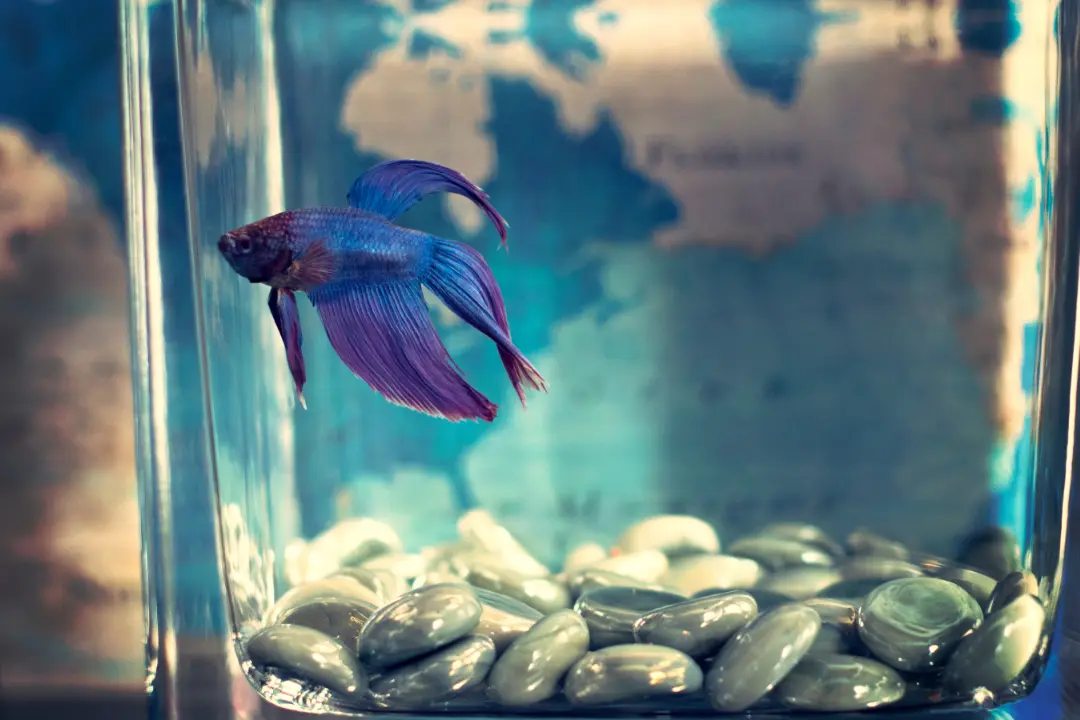
Best Betta Fish Temperature
A filter and a heater must also be added to the tank setup to maintain the ideal conditions for our violet aquatic gem. As this gem belongs to the warm freshwater lakes of Southeast Asia, the ideal temperature of the tank must be 75 to 80 degrees Fahrenheit.
Best Betta Fish pH
The pH level of the tank must be between 6.5 to 8, Keep in mind that Purple Betta Fish is very sensitive to pH levels, and un-compatible pH levels might result in health conditions such as ammonia poisoning.
The tank water must be changed regularly, we suggest changing the water at least once a week. At minimum one-third of the water must be replaced. Don’t change the water completely as this might shock the fish and stress it out, but make sure to change the water regularly otherwise the fecal material can make your pretty Betta fish severely ill.
Purple Betta Fish Tank Decoration
Adding decorative plants and stones to the aquarium can make it more aesthetic and closer to the natural habitat of the Betta. To decorate the fish tank, keep a rough sketch of the natural habitat of the Betta and try to replicate that.
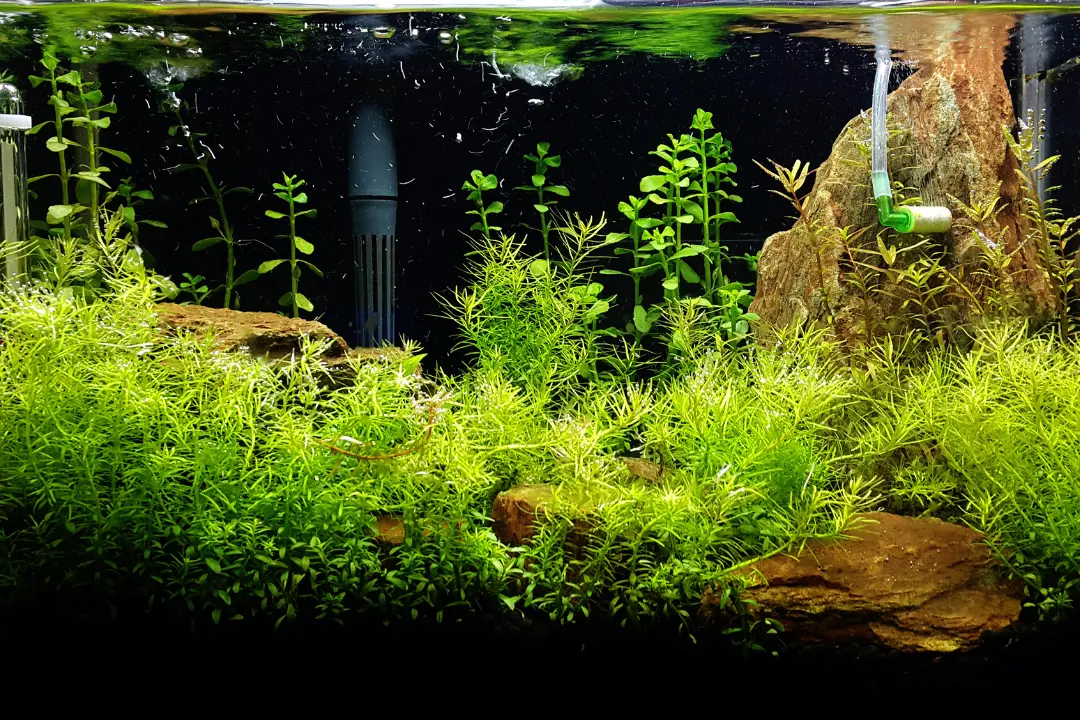
We suggest having live plants, such as moss, Water weeds, and Water Sprite are some live plants that can elevate your aquarium’s looks. Moreover, Stones and driftwood can be a good choice for making small hiding spots as Purple Betta likes its privacy, it also gives our purple friend a chance to play hide and seek.
Fake plants and decorations can also work, but we suggest using soft and natural ones as sharp and hard objects might damage the delicate finds and tail of our little purple gem. If using plastic, make sure it is harmless, non-toxic, and safe to use in aquariums.
Purple Beta Fish Cost
As we have discussed above the breeding of betta fish is quite hard, and the breeding of Purple Betta fish is even harder due to specific requirements and low success rate. This makes the market demand for the rarest betta fish color quite high.
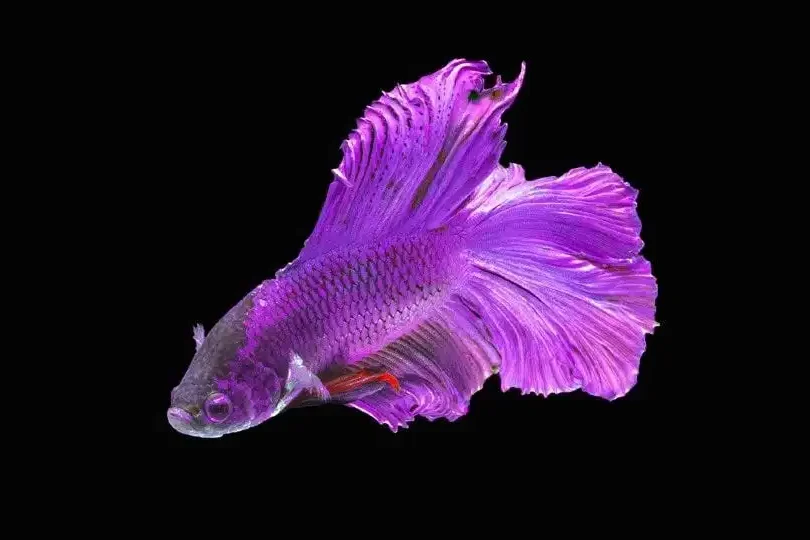
Image Source: medium
If you are wondering how much does a betta fish cost and where to get them? You should know that the high demand for Betta fish reflects directly on their cost, Usually Betta fish costs around 25$ to 30$ but the prices may vary. However, the Purple Betta fish tends to cost even more due to its unique and scarce color properties.
If you’re lucky enough to find one, we suggest paying a few extra dollars to get your hands on such a unique Aquatic Marvel.
Purple Betta Fish Breeding
Breeding Purple Betta fish is not an easy task and we would suggest not to try this if you are not familiar with breeding betta fishes. The success rate of breeding betta fish is very low, thus the high demand and market prices.
The breeding process also requires high maintenance and precautions along with specific water and temperature conditions. The process is quite aggressive, so you can’t really differentiate if the fish are fighting or mating, this might end up in water contamination due to injury and further infection and disease in the fish.
But still, if you want to try, here are a few tips to follow
- Have a separate mating tank with no substrate as the eggs might get stuck,
- Keep the water flow very low and have ideal water conditions as discussed below.
- Add a heater in the tank for warm temperature.
- Add a suitable amount of moss to the water and make hiding places for the fish.
- Add some Indian almond leaves so that the male can make a bubble nest.
- Add a see-through divider in the tank
After the above-given precautions have been followed, introduce the male and the female to the tank, and make sure to put them on the opposite sides which are separated by the divider.

Betta Fish Breeding Process
Initially the male and female must be able to see each other, If the male is interested his color will glow, and if the female is interested, she will darken her colors. If this is not the case then the pair is not compatible.
Otherwise, the male will make a nest and after that, you can gently remove the divider and let the fish mingle, keep in mind that there could be a lot of aggressive, hide and seek, and attacking but this is all part of the “mating dance”.
After mating the male will transport the eggs and attach them to the bubble nest. He will guard the eggs until they have hatched. After the fry hatches, the male will keep his guard up so that they can swim freely, he might pick the ones that are falling down and initially assist them in swimming.
Keep in mind that this is the ideal situation, In some cases, the male might end up eating the unfertilized eggs, or the mating dance might stop midway (if a partner changes its mind), or the female might not be attracted to the male as they usually prefer red colored males whereas our purple friend is not the similar shade.
FAQ’s
Is there a purple betta fish?
YES! Purple betta fish are real although they are extremely rare. Their actual beauty lies in their uniqueness. This variant of the Siamese fighting fish costs a hefty amount and is one of the rare betta fish colors to choose from.
Why purple betta fish are so rare?
Purple betta fish are rare due to their hard breeding process. It requires a lot of effort and expertise to breed any betta fish, while breeding purple betta fish specifically is even harder as it is just a matter of luck and there is no guarantee if the Betta fish will be purple or not.
Are purple betta fish for your aquarium?
Purple betta can be fit for an aquarium if it has a relatively larger and spacious size. As these majestic marvels require a lot of maintenance.
Conclusion
In conclusion, learning about the world of purple betta fish demonstrates that these fish can be therapeutic companions and promote emotional connections in addition to their amazing beauty.
These fascinating animals have the rare capacity to make their owners feel happy, at ease, and in awe, creating a special bond that goes beyond the parameters of a regular pet-owner relationship.
Furthermore, research has demonstrated that socializing with betta fish, particularly those that have soothing hues like purple might have therapeutic advantages like lowering tension and anxiety levels. Upon bringing a purple betta into your life, you are inviting not only a lovely aquatic friend but also a comfort and well-being source.

